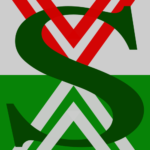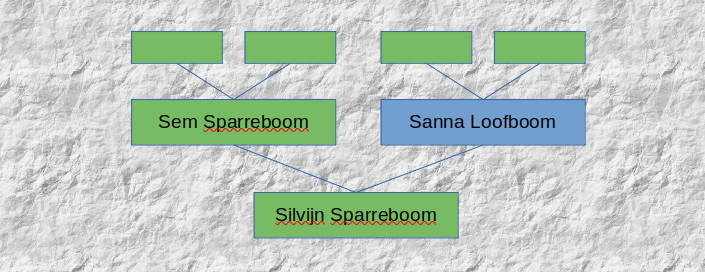
There is quite a lot of talk about a ‘family tree’ on this website, but what is it really? A family tree is a graphical representation of your relatives in the form of a tree structure.
In the image above, Silvijn has two parents, Sem and Sanna. The connection between Silvijn and one of his parents is called a branch. And those branches spread in two directions, from Silvijn towards Sem or Sanna the branches go towards the ancestors. And from Sem or Sanna towards Silvijn we talk about the descendants.
The idea of genealogy is to find as many ancestors as possible and describe them in the family tree. There is an end to that because not all ancestors have been neatly described in the past, for example, the art of printing was not invented until 1450 by Johannes Gutenberg. And although writing had been around for a long time before then, this was not usually true for recording people’s names.
We call the oldest ancestor or couple we can find the proband. That is then the starting point from which we start looking for all descendants. So downwards the family tree fans out wider and wider, but not all branches have descendants and they stop branching at that point.
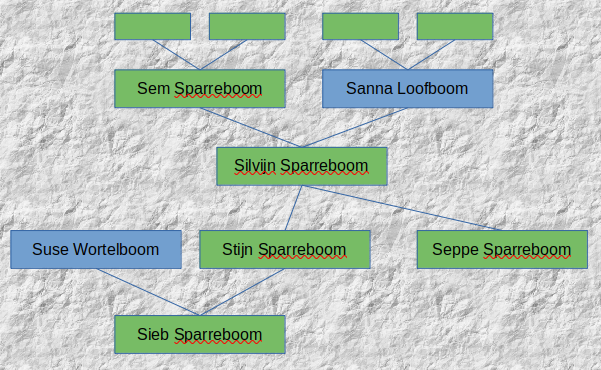
This is the case with Seppe in the image above. To be clear, the family tree only shows which descendants we were able to find! Seppe may well have children, but they were not found during the research. It therefore pays to search multiple sources and not just leave it at one.
Methode d’Aboville
As the family tree grows, so does the need to find one’s way around it. Several systems have been devised, we mention one here. In 1940, a system called the method d’Aboville was developed by Jacques d’Aboville (a French genealogist) and it is a decimal system. The numbering starts with the oldest known ancestor being given number 1. Each direct descendant is then given the number of the father or mother, followed by its own number representing the birth order of this descendant. If there are multiple marriages, one uses a lowercase letter of the alphabet (a for a first marriage, b for a second, . . . ) .
When one sees the number of digits in a number, one knows the number of generations a descendant is removed from its oldest known ancestor.
Example:
1 Ancestor
1.1 Child
1.1.1. Grandchild
1.1.1.1. Great-grandchild
1.1.1.2. Great-grandchild
1.1.2. Grandchild
1.1.2.1. Great-grandchild
1.2. Child
1.2.1. Grandchild
1.2.2. Grandchild
1.2.3. Grandchild
Sequence numbers are formed by the order of births within a family, whether boys or girls. As a second example, we will take number 114.162.C41.92. This number contains the letter C which is used as an abbreviation for the number 12. Using this number, we can use the d’Aboville method to determine which descendant of the proband, i.e. the oldest ancestor, is meant here.
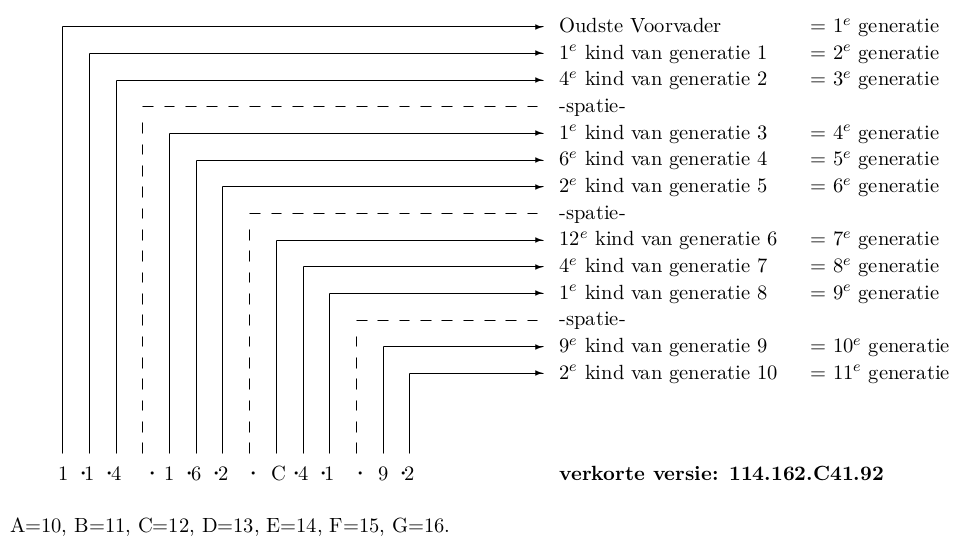
When several people are working on a family tree, they only need to pass on this number to each other. For example, “Hi, I found a daughter of 114.162.C41.92”. That talks a lot easier than a long story from the beginning of the family tree to the end.
A numbering system is also important when the entire family tree is written out or printed, otherwise the text quickly becomes illegible due to the large number of descendants. This can be clearly seen in this fan graph:
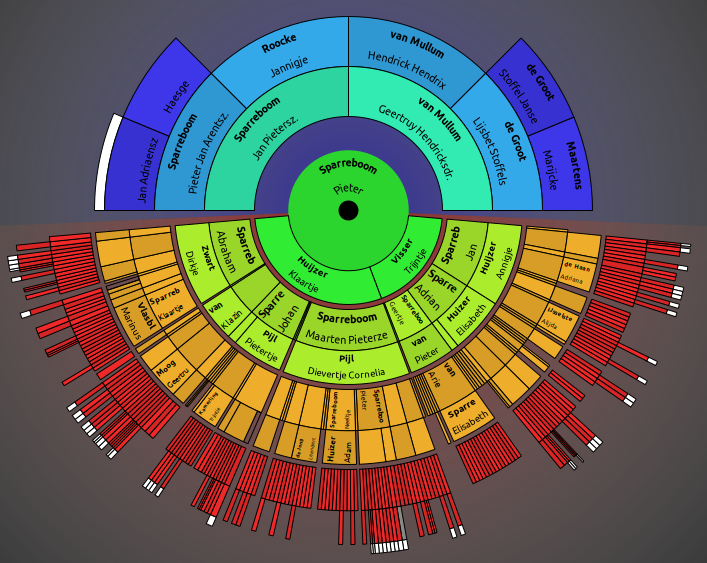
Part of family tree Sparreboom is published on this website. It does not include numbering, which is only added during the creation of reports. Take a look!
